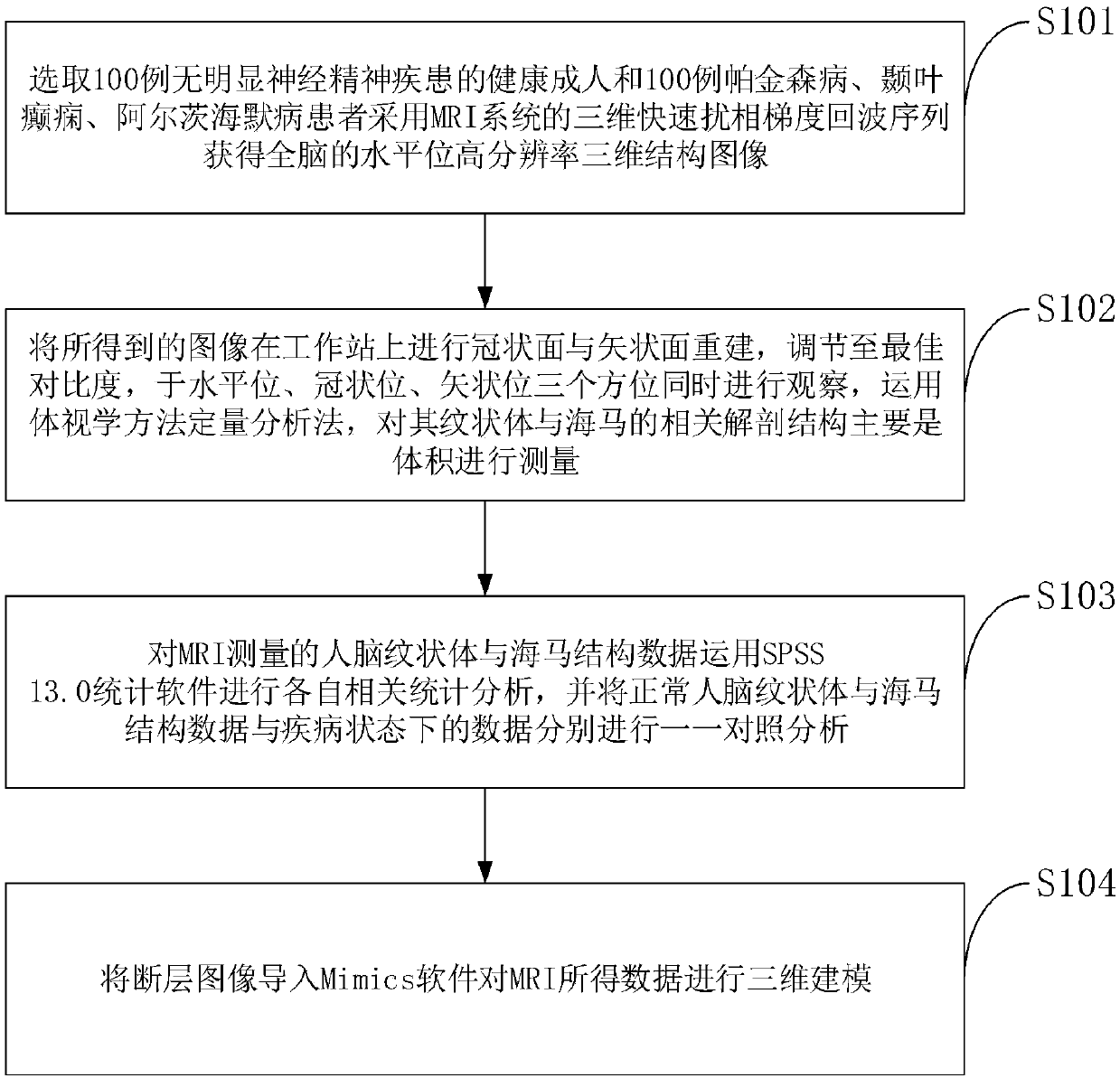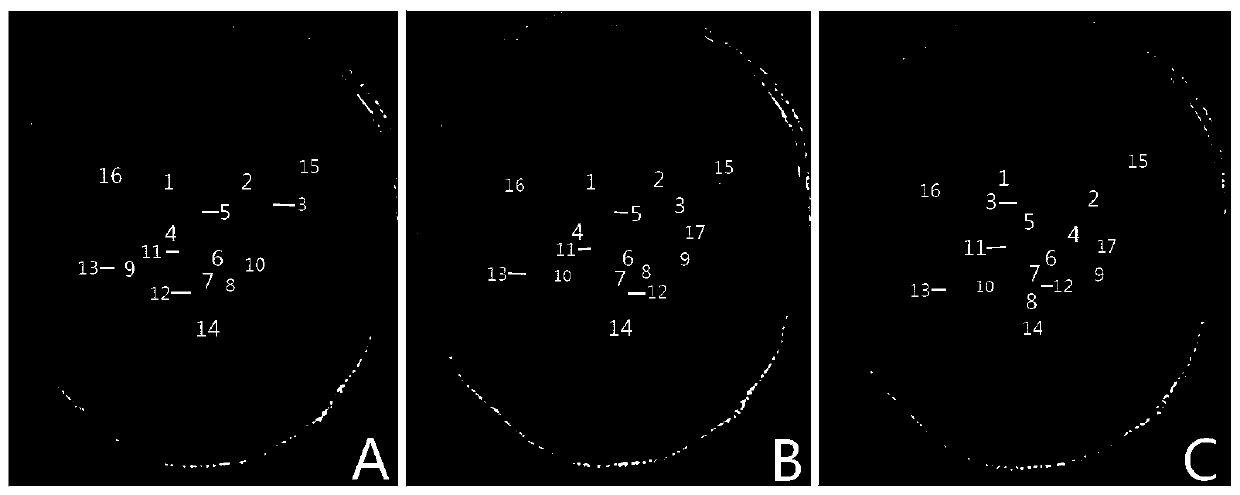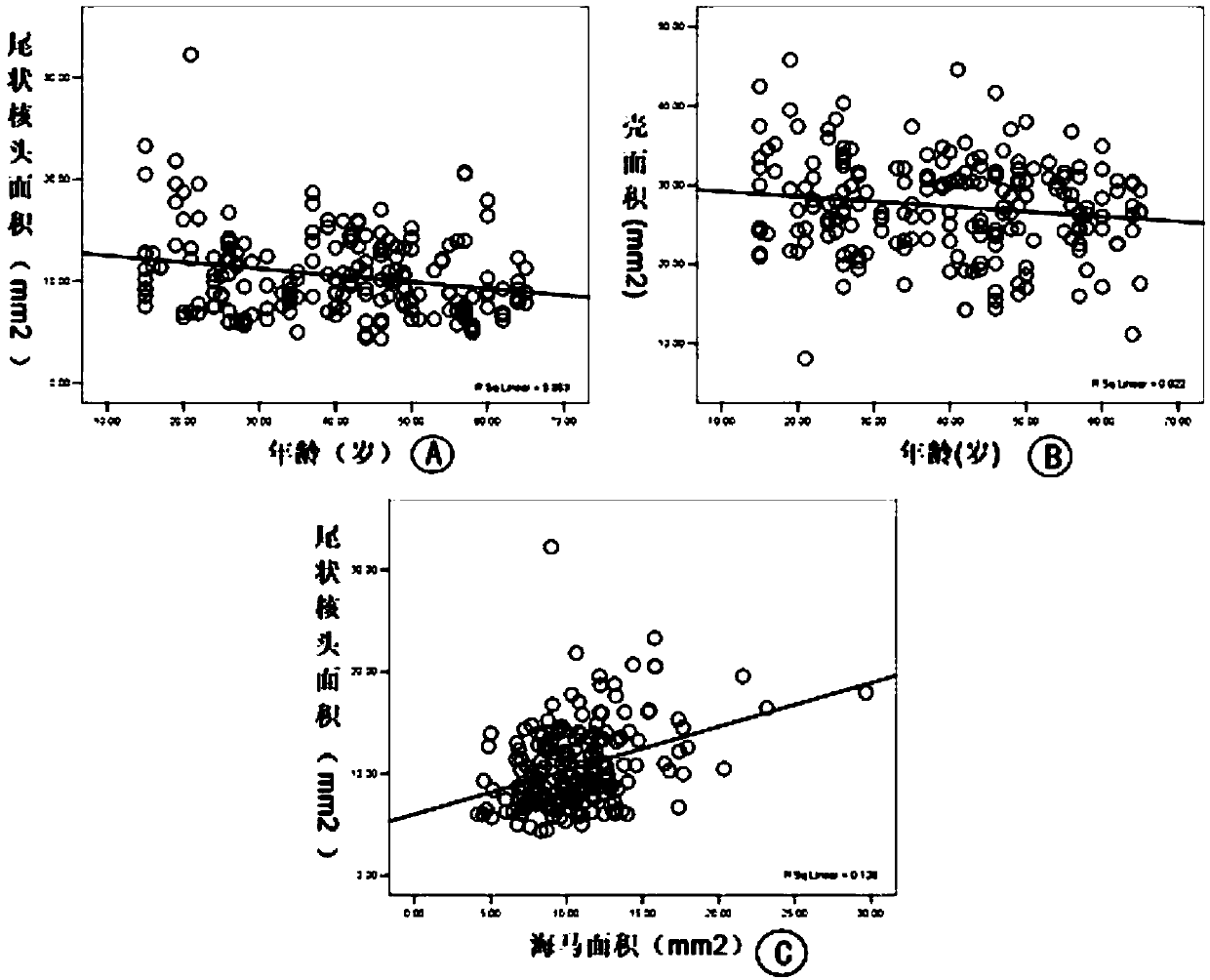A three-dimensional modeling method for sectional image anatomy of human striatum and hippocampal formation
A hippocampal structure and three-dimensional modeling technology, which is applied in the field of three-dimensional anatomical modeling of tomographic images of the striatum and hippocampal structure of the human brain, to achieve convincing data and objective results
- Summary
- Abstract
- Description
- Claims
- Application Information
AI Technical Summary
Problems solved by technology
Method used
Image
Examples
Embodiment 1
[0037] 1 Materials and methods
[0038] (1) Experimental object
[0039] Select 100 adults who were proved to be disease-free by conventional MRI sequence scans, with an average age of 40, and were divided into 5 groups according to age: 16-25, 26-35, 36-45, 46-55, and 56-65 years old, with 20 cases in each group , 10 males and 10 females each, Han nationality. The Mini-Mental State Examination was unremarkable. The exclusion criteria were: central nervous system lesions; history of drug abuse, alcohol abuse, head trauma and family genetic diseases; previous cardiovascular and nervous system surgery or history of mental illness; long-term use of drugs that could affect the nervous system or Those who have taken drugs that affect the nervous system in the past 1 year; those whose collected images do not meet the research requirements.
[0040] (2) MRI scan parameters and observations
[0041] All subjects used GE Signa HDxt 3.0T 3.0T MRI system in the United States, with 8-...
PUM
 Login to View More
Login to View More Abstract
Description
Claims
Application Information
 Login to View More
Login to View More - R&D
- Intellectual Property
- Life Sciences
- Materials
- Tech Scout
- Unparalleled Data Quality
- Higher Quality Content
- 60% Fewer Hallucinations
Browse by: Latest US Patents, China's latest patents, Technical Efficacy Thesaurus, Application Domain, Technology Topic, Popular Technical Reports.
© 2025 PatSnap. All rights reserved.Legal|Privacy policy|Modern Slavery Act Transparency Statement|Sitemap|About US| Contact US: help@patsnap.com



